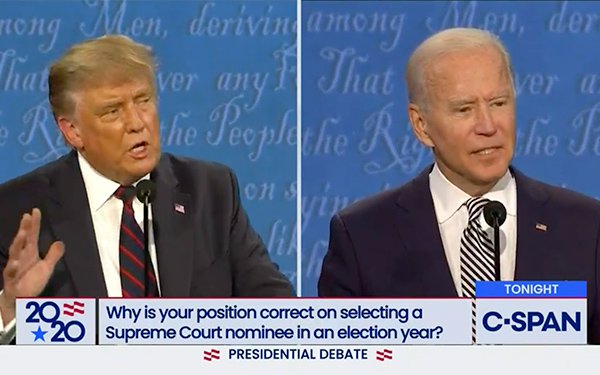Commentary
Do-It-Yourself Presidential Engagement Evaluation
- by Robert Passikoff , Op-Ed Contributor, October 8, 2020

Were you aware that depending upon your political predilections you have an identifiable, preconceived notion of what your ideal President looks like? And that ideal can be used to predict voting patterns and the winning candidate?
Like most things in life, loyalty/engagement metrics can be used as a leading-indicator of consumer and voter behavior, so in this instance we’re going to use a simplified DIY Election Engagement formula. Brands, or in this instance, candidates, that best meet expectations you hold for the category drivers are always the winners, e.g., most supporters, biggest contributions, most votes, well, you get the point.
Our model has been used in every Presidential election since Bill Clinton ran against George H.W. Bush in 1992. It has correctly predicted the winner in every Presidential election – with the exception of the 2000 race where George W. Bush beat our predicted winner, Al Gore. That’s an overall 86% success rate.
advertisement
advertisement
We called the 2016 election for Donald Trump too. We’re always able to do so because emotional engagement assessments measure what consumers really think, as opposed to what they say they think.
Engagement with a Presidential candidate is measured against an ideal. In this instance, the ideal is made up of five drivers, that define or “describe” the ideal. Because drivers are made up of more emotional than rational components, accurately identifying them is always problematic. Next, voters hold certain expectations for delivery against each driver.
The combination of the order of the drivers and expectations held for each driver identifies how voters view the office of the President, compare candidates and, ultimately, how they’ll engage with and behave positively, e.g., vote, for the candidate who best meets their expectations.
The order of electoral engagement drivers and what voters expect vary in terms of what’s important to Democrats, Independents, and Republicans, resulting in different party views, voter standards, candidate preferences, and, ultimately, voting behavior. The drivers – presented here alphabetically – can briefly be described as follows:
Action: Does the candidate have a comprehensive, realistic, well-considered plan for solving the problems facing the country?
Compassion: Does the candidate care about all the people?
Perception: Does the candidate have a deep understanding of the social, economic, and cultural problems facing the country?
Resolve: Do voters believe the candidate has the strength and leadership to guide the country?
Trust: Is the candidate and his advisors reliable and truthful and do they communicate openly and lucidly?
It is important to note that while those five values are used to “define” the ideal President, they vary in their order of importance and the level of expectation held for each, according to a voter’s political affiliation and/or socio-cultural beliefs.
Let’s see where you end up. I’ll talk you through it. We’d normally use our questionnaire and loyalty algorithm, a combination of psychological inquiry and higher-order statistical analyses, but in this case, we’ll go old school. Get a piece of paper and pencil.
Ready? Write “1,” “2,” “3,” “4,” “5” on the left side of the paper.
Now write one of the five drivers listed above next to a number indicating how important it is to you when it comes to your ideal President, 1 being most important and so on. You can’t ignore any of the drivers. You need all of them.
Below you’ll find the order of the drivers that describe the Ideal President by political affiliation.
Presented by political affiliation the driver orders (as characterized by 1,520 registered voters) look like this:
Democrats see their Ideal President as follows:
Perception
Trust
Resolve
Compassion
Action
Independents view their Ideal President as follows:
Resolve
Perception
Trust
Compassion
Action
The Republicans’ Ideal President looks like this:
Resolve
Perception
Action
Trust
Compassion
Now that you have the order of the drivers that define your ideal President, you can measure individual candidates against that particular ideal to see how well the candidate meets expectations. Again, we’d normally do this using indirect, psychological assessments and a computer program but in this case we’ll do it with paper and pencil.
Assume each driver of your ideal equals 100%. How well do you think your candidate matches up? Write down a percentage next to each of the five drivers. A word of advice: not many brands meet expectations by 100%. When you’re done, calculate an average of the five percentages and you’ll have a measure of candidate engagement.
Be honest. Don’t delude yourself. It will be more accurate if you don’t. Think about the candidate, platform, philosophy, agenda, and competitive brands. It’s not always easy to sift out preconceptions. If you want to make additional changes, go ahead.
Feel free to try this at home or with friends and family. I think it’s fair to say, no matter what your political affiliation, for too long politics seem to have been concerned with right or left, instead of right or wrong, but that's just me talking. But getting research and elections right is of paramount concern and something everyone should be talking about.


